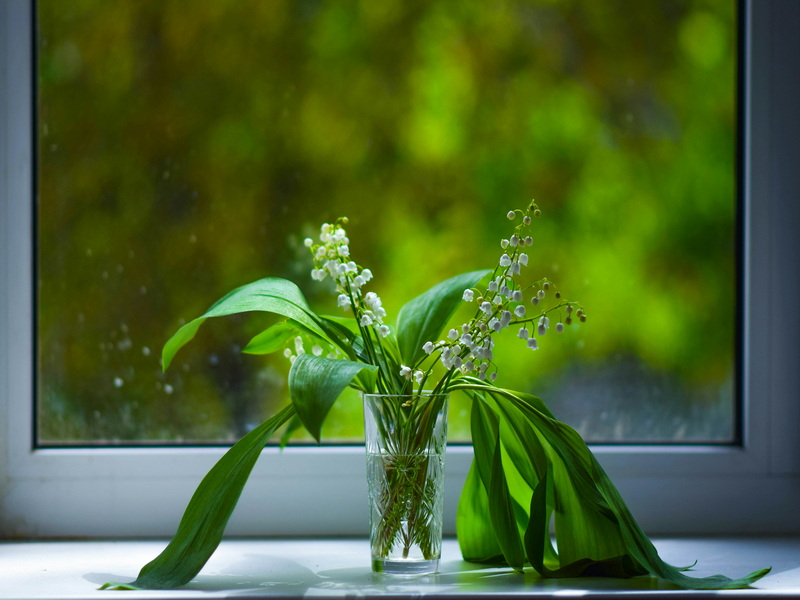English 




Views: 222 Author: Astin Publish Time: 2025-02-07 Origin: Site



Content Menu
>> Sanding
>> Taping
● Priming
● Painting
● Troubleshooting Common Issues
● Extending the Life of Your Painted Aluminum Windows
>> Touch-Ups
>> Protection from the Elements
● How to Paint Over Already Painted Aluminum?
● FAQ
>> 1. What are the essential tools for painting aluminum windows?
>> 2. How do I prepare aluminum windows for painting?
>> 3. What type of paint should I use for aluminum windows?
>> 4. How many coats of paint should I apply?
>> 5. How can I ensure a smooth and long-lasting finish?
Painting old aluminum windows can refresh their appearance and extend their lifespan. This comprehensive guide provides step-by-step instructions, essential tips, and answers to frequently asked questions to help you achieve a professional finish.

The foundation of any successful paint job is thorough preparation. Begin by cleaning the aluminum windows with warm, soapy water and a sponge or microfiber cloth. Washing up liquid works well for this purpose. For stubborn marks, use the abrasive side of the sponge. If the window is not powder-coated, use fine wire wool or fine-grit sandpaper to help the paint adhere to the surface. Wipe down the window with a dry cloth to ensure the surface is clean and dry. If painting indoors, ensure adequate ventilation by opening the windows. Proper ventilation will not only help the paint dry faster but also prevent the buildup of harmful fumes.
If the aluminum window frame is already painted, consider removing the old paint. Old paints can react with the chemicals in the new paint, leading to bubbling, peeling, or discoloration. Steel wool is effective for removing old paints from aluminum frames. Dish soap can lubricate the steel wool, and vinegar can help lift limescale deposits. Use old toothbrushes to clean the corners of the window frame. Rinse the frame with water and dry it off. For more stubborn stains, consider using a commercial paint stripper, following the manufacturer's instructions carefully. Always wear gloves and eye protection when using chemical strippers.
Sanding the aluminum windows creates a rough surface that aids paint adhesion. Use fine-grit sandpaper (220-grit or higher) to lightly sand the windows, being careful not to apply too much pressure to avoid damage. The goal is to create a slightly textured surface, not to remove the existing finish entirely. This process is crucial as it allows the primer and paint to grip the aluminum effectively, preventing future peeling and chipping. After sanding, wipe the surface down with a tack cloth to remove any dust particles.
Use painter's tape to protect areas you don't want to paint, such as hinges, runners, and locks. This also helps catch drips and achieve a professional finish. Apply the tape tightly to the glass for a clean edge. If spraying, cover the glass with paper to prevent any spray from settling on the pane. Mask off the edges of the frame to protect the walls. Invest in high-quality painter's tape for the best results; cheaper tapes may not adhere well and can allow paint to seep underneath, resulting in messy edges. When applying the tape, press firmly along the edges to ensure a tight seal.
Applying a primer is essential for achieving the best finish on aluminum windows. The primer enhances paint adhesion and provides a smooth base for the topcoat. Use a primer specifically designed for metal surfaces to prevent peeling. Apply the primer with a brush, paint sprayer, or spray can. Start at the top corner, work across, then down, and finally along the bottom. Use up-and-down strokes for even coverage. Allow the primer to dry completely before proceeding with painting. The drying time will vary depending on the type of primer used and the environmental conditions, so always refer to the manufacturer's instructions.
Choose an anti-corrosive primer to make a flexible, highly adhesive layer on the aluminum. This will also strengthen its protective effect, preventing corrosion for years. Self-etching primers are particularly effective as they chemically bond to the aluminum, providing an excellent base for paint. Red rust-oleum primer can be used on areas that have fish eyed, after sanding. Always apply the primer in thin, even coats to prevent drips and runs. If using a spray primer, maintain a consistent distance from the surface and overlap each pass slightly.
Select a paint specifically designed for metal surfaces, such as acrylic enamel or oil-based paints. High-quality, weather-resistant paints ensure long-lasting results. Acrylic enamel paints are generally preferred for their durability, flexibility, and resistance to fading and chipping. Oil-based paints offer excellent adhesion and a smooth finish but may require longer drying times and more careful cleanup. Always follow the instructions on the paint can. Most manufacturers recommend using a thinner and mixing it with the paint.
Spray guns allow for quick and efficient coverage, especially for larger window frames. However, brushing is another effective technique, particularly for smaller areas and intricate details. Use high-quality brushes with synthetic bristles, as natural bristles can leave brush marks on the surface. Apply thin coats of paint in long strokes, avoiding overloading the brush. Work from top to bottom or left to right, maintaining a wet edge to prevent visible lines and overlaps. Rollers are not recommended for small areas like windowsills, as they can leave bubbles or streaks.
Ensure the primer is completely dry and has cured for at least 24 hours. If using a spray can or brush, shake well before use. When applying paint with a brush or roller, start from one corner and work across in long strokes. Avoid overloading the brush or roller to prevent drips and uneven coverage. If using spray cans, hold them about 6-8 inches away from the surface and spray in even, back-and-forth motions. Apply two coats of paint if necessary, allowing each coat to dry completely before applying another. Allow sufficient drying time between coats is crucial for achieving a durable and long-lasting finish.
- Open the exterior paint tin and stir with a spatula for about a minute to even out the color, ensuring that the pigments are evenly distributed throughout the paint.
- Use a small paintbrush to apply, ensuring all excess paint has been wiped off the paintbrush on the side of the tin to prevent drips and runs.
- Glide the paintbrush up and down the window frame smoothly for an even coat of paint, using long, consistent strokes.
- Allow each coat to dry fully and create a gentle key before applying a second and third coat of paint until the aluminum is completely colored, with no metal shining through. A gentle key refers to lightly sanding the surface between coats to create a slightly rough texture that improves adhesion.

If you experience paint runs or drips, don't panic. Allow the paint to dry completely, then use fine-grit sandpaper to gently smooth out the imperfection. Wipe away the dust and apply another thin coat of paint to blend the area seamlessly.
Bubbling or peeling paint is often a sign of poor preparation or inadequate priming. If you notice this happening, stop painting immediately. Remove the affected paint, thoroughly clean and sand the surface, apply a fresh coat of primer, and then repaint.
Uneven color coverage can occur if the paint is not mixed properly or if the coats are too thin. Ensure that the paint is thoroughly mixed before application and apply multiple thin coats rather than one thick coat.
Regularly clean your painted aluminum windows with mild soap and water to remove dirt and grime. This will help to maintain their appearance and prevent the buildup of contaminants that can damage the paint.
Inspect your painted aluminum windows periodically for any signs of chipping or damage. Touch up any affected areas promptly to prevent further deterioration.
Consider applying a clear coat of sealant to protect your painted aluminum windows from harsh weather conditions, such as UV rays, rain, and snow.
When spray painting aluminum windows, take care to avoid toxic fumes. Prime and spray paint in well-ventilated areas. Wear necessary goggles, gloves, and other protective clothing. A respirator may also be necessary if you are working in an enclosed space or using paints with strong odors.
Clean the surface with soap and water. Sand lightly to remove gloss. Apply a primer designed for metal. Paint with high-quality enamel or acrylic paint. Let it dry completely. If the old paint is peeling or chipping, remove it entirely before proceeding.
Painting old aluminum windows is a straightforward task that can significantly enhance your home's appearance and extend the life of your windows. By following these detailed steps and using the right tools and materials, you can achieve a professional finish. Remember that thorough preparation, proper priming, and careful application are key to a successful outcome. Regular maintenance will keep your windows looking fresh and new for years to come.

Essential tools include a scraper, wire brush, sandpaper, paintbrushes, painter's tape, drop cloths, safety goggles, and gloves. Additionally, consider investing in a tack cloth for removing dust particles and a paint scraper for removing old paint.
Clean the windows thoroughly with a degreasing solution to remove any dirt, oil, or grime. Then, apply a self-etching primer to promote adhesion and prevent corrosion. Make sure to rinse thoroughly after cleaning and allow the windows to dry completely before priming.
Select a paint specifically designed for metal surfaces, such as acrylic enamel or oil-based paints. High-quality, weather-resistant paints ensure long-lasting results. Consider the finish you desire (e.g., gloss, semi-gloss, matte) when selecting your paint.
Apply two coats of paint if necessary, but ensure that each coat dries completely before applying another layer. Allow sufficient drying time between coats, as recommended by the paint manufacturer.
Sanding and priming are crucial steps for a smooth and long-lasting finish. Use sandpaper to remove any loose paint or rust. Apply a coat of metal primer using a brush or spray can. Remember to apply thin, even coats and avoid overloading the brush or spray can.
[1] https://www.homebuilding.co.uk/advice/painting-aluminium-windows
[2] https://expresswindowsgroup.co.uk/painting-aluminium-windows-techniques-and-tips/
[3] https://windowdigest.com/how-to-paint-aluminum-window-frames/
[4] https://www.youtube.com/watch?v=KdanPL9bamg
[5] https://www.aikondistribution.com/blog/how-to-paint-aluminium-window-frames-97
[6] https://powertoolbase.com/paint-aluminum-windows/
[7] https://newlookcoatings.co.nz/how-to-paint-faded-aluminium-windows/
[8] https://www.youtube.com/watch?v=FjrhV9IPTKE
[9] https://www.thepaintshed.com/tips-advice/how-to-paint-aluminium-window-frames
Top Aluminum Furnitures Manufacturers and Suppliers in Czech Republic
Top Aluminum Furnitures Manufacturers and Suppliers in Poland
Top Aluminum Furnitures Manufacturers and Suppliers in Belgium
Top Aluminum Furnitures Manufacturers and Suppliers in Finland
Top Aluminum Furnitures Manufacturers and Suppliers in Denmark
Top Aluminum Furnitures Manufacturers and Suppliers in Greece
Top Aluminum Furnitures Manufacturers and Suppliers in Portugal
Top Aluminum Furnitures Manufacturers and Suppliers in Austria
Top Aluminum Furnitures Manufacturers and Suppliers in Norway
Top Aluminum Furnitures Manufacturers and Suppliers in Sweden
